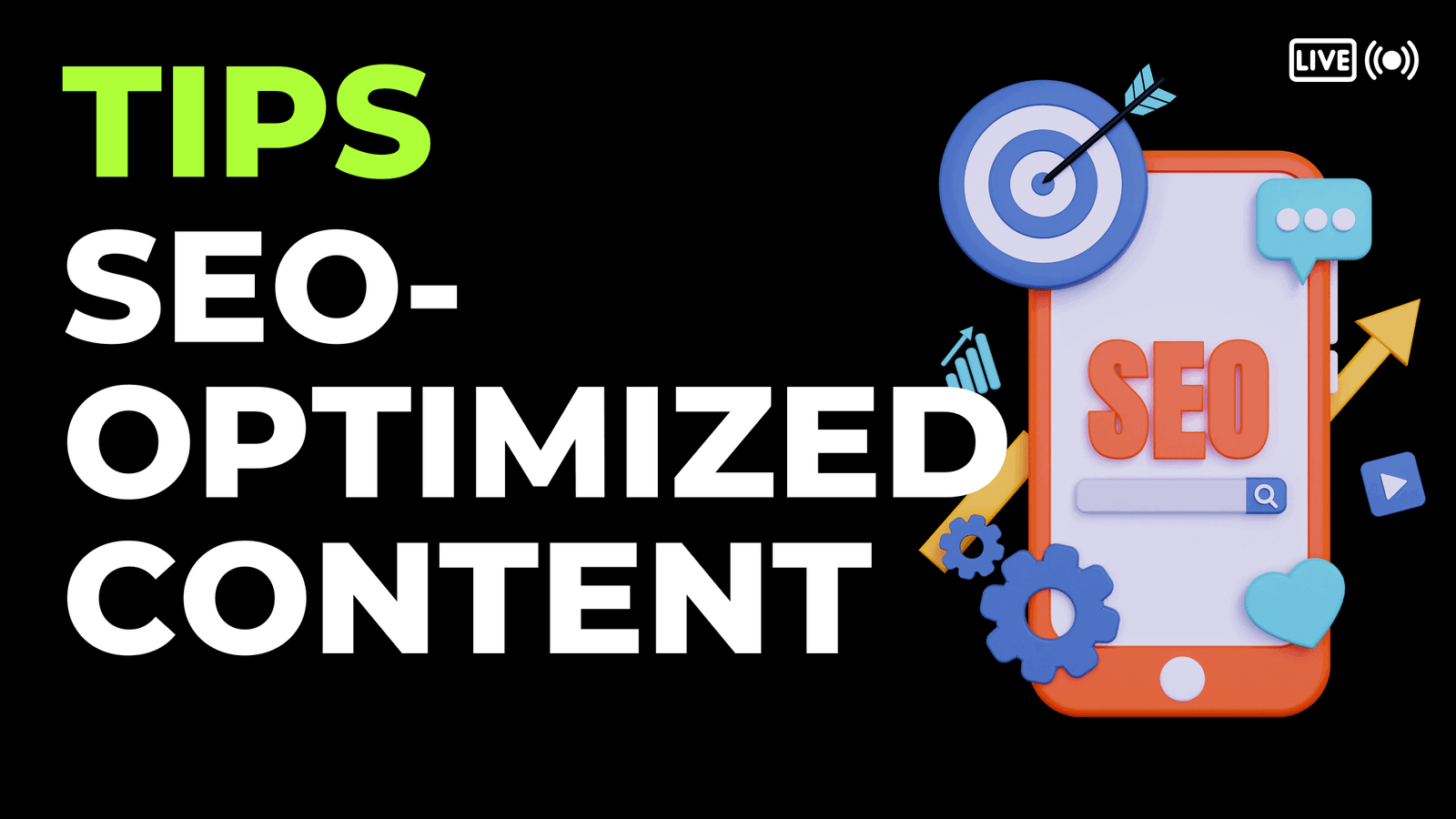Google keeps on changing its algorithm throughout the year. It means the SEO strategy that worked last year—may or may not work this year.
Even if you’re running your own website or working as a writer, you should know how much SEO is important in ranking a website in SERP.
Today, SEO is very much different from the old one. It is now an art and the SEO person is an artist.
It requires content writers or digital marketers to understand the search engine ranking factors; search intent and high-quality content that fulfills the demand of users & search engines, keywords density, readability, visuals, etc.
To rank on the first page of the search engine, you need to craft well-optimized SEO-friendly pieces of content. If you optimize your content in a good way, it can give you a heavy boost to reach your target audience.
This blog will cover some SEO-friendly content-writing tips that will help you to increase your traffic and sales. But before getting into them, we have to explore what is SEO content and how it is helpful for websites.
What is SEO Content?

SEO content is a type of writing in which we write and create our content in a way that can get a high ranking on search engine result pages.
To understand what marketers mean by SEO content, it’s helpful to break down the phrase into its components:
The word “SEO” refers to search engine optimization. It is a process of optimizing the website for ranking higher on search engines like Google and Bing so that users can find it easily.
And if we talk about the word “Content,” it means any information available on the websites in the form of blogs, articles, or any text.
It has become essential for all industries in the digital marketing space, including blogging, social media marketing, affiliate marketing, and branding to create SEO content. It is vital to all digital marketing activities.
Now, let’s get back to the point, which is how SEO content can increase traffic and sales. So, to answer this question, we have come up with eight valuable tips that are very helpful in SEO content writing.
Top Valuable Tips for Writing SEO-Friendly Content
Here are eight easy but valuable SEO tips you can implement today to increase your website’s ranking and attract more organic traffic.
1. Know Your Audience

The first tip that you have to follow is to do proper research on your target audience and understand them well. Knowing your targeted audience in detail will help you to know their issues, problems, and needs.
If you succeed to know your audience, then you’ll be able to set to content that can help them. They will also tend to like the content which is specially created for them.
In knowing your target audience, you need to know:
What is their profession?
What problems do they face in their daily life?
What are their daily activities?
What are their interests and hobbies? Etc.
Let’s suppose, your target audience is online gamers, then you’ve to understand their daily life problems such as mobile heat-up issues, charging issues, cost-effective gaming PCs, PlayStation prices, etc.
You can also use some online tools to know about the problems of your audience. One of the best tools that can help you to learn more about your audience is Quora and Reddit. On these platforms, you will be able to find queries that are related to your audience.
You can ask any question or read others’ problems for gaining information. Interacting with people will help you know their problems and your targeted audience.
This is how you will be able to know your audience and create content that can be helpful for them.
2. Do Research and Find Appropriate Keywords

Keywords are the main part of SEO and ranking. They are the words or phrases that users type on the search engine when they are looking for something. The right keywords can help you to get a high ranking on the search engine result pages (SERPs).
But the problem that you might face is, how you can find the right keywords that can be used in your content.
So, here we will show you various methods that you can opt for to find appropriate keywords.
Autocomplete Feature:

This is the best way to find the right keywords that you can use in your content. With this feature, you will be able to find long-tail keywords (consisting of two or three words).
You just have to put your main keyword (for example “keyword”) in the search engine and it will give you many relevant keywords.
People Also Ask (PAA):
Using the PAA feature can help you to find queries and keywords relevant to your main point. It will also help you to find appropriate keywords.
Related Searches:

To find the right keywords, you can also check related searches available at the end of the first page of the search engine. This will help you to find some relevant queries or searches that users make.
Use Online Keywords Tools:

Using an online tool to look for keywords is also a good option. It not only helps to find the right keywords but also shows you their daily, weekly, and monthly traffic. Online keyword finders include; Google Keyword Planner, Semrush, Ahref, Ubersuggest, etc.
These tools can help you fetch keywords from ranking websites. Moreover, you can find the volume, difficulty, competition, competitors, and many other stats of a keyword.
These tools will lead you to the best keywords to write on. You can also find LSI keywords through this tool.
LSI keywords (Latent Semantic Index) are known as the synonyms or altering keywords of the main keyword.
For example, if ‘Sports car’ is the main keyword then its LSI keywords will be ‘Best sports car’, ‘Cheap sports car’, ‘Blue sports car’, etc. Remember finding LSI keywords is as important as finding main keywords. So, never skip to find and add LSI keywords.
Do consider the following while choosing keywords:
- Keyword should be long tail (consist of 3-4 words)
- Keyword should have a low competition
- Keyword should have a low difficulty
- Keyword should have a moderate search volume
- Keyword should be highly relevant to the content.
3. Do Appropriate Placing of Keywords
So, when you are done finding the right keywords, make sure to use them in your content at the place where they are making sense. You should not use keywords unnecessarily. It can lead to keyword stuffing and you will not be able to rank on the search engine.
The best ways to use your keyword in the content:
Add the Main keyword in the Title
Adding the main keyword in the H1 title is a good practice while writing SEO-optimized content. For example, if your keyword is ‘sports car’ then the title for your blog post can be ‘How to purchase a sports car at discounted price’
Add Main Keyword in the Introduction
There should be the main keyword and LSI keywords in the introduction of your blog post or article. Having keywords in the introduction indicates the search engine to rank the blog of that specific keyword.
Add Main Keyword in Headings
At least two of your main headings H2 and H3 should have your main keywords in them. However, LSI keywords can also be added to the heading. It is also considered good practice in SEO content writing.
Add Main Keyword in the Body
Add main keywords in the body of headings where it is necessary. Keywords will indicate the search engine to show the content to the relevant or interested people only. Keep in mind, to avoid keyword stuffing only add keywords where required.
Add Main LSI Keywords in the Body
LSI keywords play a role in support of the main keywords. LSI keywords can be added in the body of headings in place of the main keywords sometimes. It can save your content from keyword stuffing, you don’t need to add the main keyword every time.
Add Main Keyword in Conclusion
Your focused keywords should be there in the conclusion at the end of the article or blog post. Having the main keyword in the conclusion helps the search engine to examine the content throughout the end.
Add Main Keyword in URL
It is an SEO practice to add main keywords to the webpage’s URL. It can be an LSI keyword if you don’t think that adding the main is appropriate for the URL.
For example, if your main keyword is ‘sports car’ and your article title is ‘How to purchase a sports car at discounted price’ then you can set the slug to ‘www.xyz.com/buy-sports-car-at- discounted-price/’
Add Main Keyword in Meta Title
A meta title or title tag is a sentence or combination of words displayed on your search engine result pages at top of every web page. It indicates the user and search engines about the content on that special webpage. You should adjust your main keyword once in your web page’s meta title. The ideal length for a meta title is approx. 50-60 characters.
Add Main Keyword in Meta Description
A meta description is a brief introduction of content on a web page. Users can easily analyze the content without visiting the web page through this brief description. You should have the main keyword and LSI keyword in your meta description. The ideal length for meta description is approx. 155-160 characters.
Number of Keywords in a 1x1000 Words Article:
- in the URL of Webpage (1x)
- in the Title (1x)
- in the Meta-Description (1x)
- in the Intro (app. 2x)
- in the Body of Content (use them where needed)
- in the Conclusion (1x)
So, this is how you can use keywords in your content that will help you to optimize it for ranking and help to increase your traffic and sales.
4. Check and Remove Plagiarism
Plagiarism is unacceptable all around the globe. Search engines may give a bit of flexibility on other factors but they don’t spare anyone from plagiarism. Plagiarized content is unable to index and rank in search engine result pages.
It is the most hated thing by any search engine. Therefore, using plagiarized content in your SEO writing is very dangerous. One should check for plagiarism in his or her content before publishing, using a plagiarism checker.
A plagiarism checker can detect any sort of plagiarism no matter whether it is intentional or accidental. If you copy someone’s idea or content and use it as it is without any acknowledgment or credit given is considered intentional plagiarism.

While if you used someone’s content unintentionally, then it will be considered accidental plagiarism. If any part of your content is found plagiarized, you need to make it unique.
Plagiarism detectors can find the copied content within no time by using artificial intelligence and machine learning algorithms.
Plagiarized text can be removed by altering the words used, changing the sentence structure, converting bullets to paragraphs, and vice versa.
For changing sentence structure and wording, a paraphrasing tool can be very helpful because it saves you from wasting the time and effort of rewording manually.
If you will not use a paraphrasing tool or go for manual approach, there are chances for you to disturb the content tone while changing the words and sentence structure for plagiarism removal because you may lack vocabulary and grammar skills.
Therefore, using technology is the best way out. Most of the paraphrasing tools are free and do not charge even a penny for rewording content to attain uniqueness. Moreover, it just requires minimal effort to remove plagiarism from it. All you just have to put plagiarized content in it and sit back.
5. Write Up-to-date Content Only

Updated content is the key to success in SEO and can also help in getting high traffic and sales. Updated content means that it should not have any old statistics, extinct vocabulary, disapproved theories, etc.
You can keep your content up to date by doing proper research and cross-checking the information from multiple sources. Moreover, while researching, always consider information from an authentic source.
The source can be a well-reputed website, a book by a known writer, a research paper by a certified researcher, and much more. As we all know readers and search engine prioritizes fresh and updated content.
If you’re struggling to find the motivation of writing long-form content for your website, then you can also update the existing content. Updating your old content not only makes your content unique but can also become a ranking factor.
Existing content already has its own authority and in some cases, an established audience.
Rather than creating a new blog or content and optimizing it for ranking on the search engine, it is simple to boost and update your old existing content. You can do it by updating the visuals, reconsidering the facts if any, removing disapproved theories, updating the surveys, etc.
Outdated content can damage your reputation because when a user comes to your website and finds some wrong information, they will never come back. Moreover, Google also does not support outdated content.
Hence, writing updated content and upgrading the already existing content is good for your website’s SEO and it can also help your website rank. Ultimately, it helps in increasing traffic and sales.
6. Focus on Readability

Readability is another factor that can elevate or destroy SEO writing. Google ranking algorithms and users both like easily readable content. According to Google, your content should be easily readable by 8th-grade students or a child of 13-15 years.
It means that you have to use easy words and ignore complex sentences/phrases. We know that there are several words in the English vocabulary with similar meanings, but the spellings and pronunciation are different.
Hence, you can use easy words that are usually spoken or used in your daily routine instead of rare and difficult ones. You can consult a dictionary and Google to find the synonyms for tough words. Thesaurus is another platform that can help you find suitable words to replace difficult words to enhance readability.
Remember, make sure to determine the content tone before changing the synonyms because Search engines and Thesaurus only give you synonyms but do not tell you about their proper usage.
For example, let’s take a sentence ‘They need a coffin to bury the martyr’ when we try to change words in it, Google will provide the synonyms for ‘need’ like ‘desire’ and for ‘bury’ like ‘conceal or hide’.
While using these kinds of words in this sentence is not appropriate as they do not match the context of the sentence.
Synonyms are only one thing that can improve readability, making sentences easy, and shorting the paragraphs can also help improve readability. Readability can also be enhanced by rephrasing paragraphs. You can rephrase paragraphs to shorten their length, add or remove sentences, and make complex sentences easy.
Online tools can also help to rephrase paragraphs. They can save you a lot of time. Plus, their output is accurate and highly readable. You should check the readability of the content before publishing it with the help of online readability checkers.
7. Add and Optimize Visuals
Visuals are necessary to add to any piece of content. It is stated in Google guidelines that content with good and relevant visuals is preferred instead of content without them.
Therefore, you should add them to your content and consider them obligatory thing. Visuals can be in the form of images, videos, graphs, etc. Do consider these points before adding any visuals to your content:
- The visuals should be highly relevant
- The visuals should be unique
- Never copy images or videos to use them in your content
- The visuals should not cause the load time of the page to increase
- It should be placed in the right place
- Use high-quality visuals only.
If we talk about optimization, the picture should be compressed or converted into webp format but make sure not to decrease the quality. You can use compression tools that can make the picture size small without decreasing the quality.
In the case of videos, you should embed them by just pasting their link instead of uploading them. Uploading videos can increase the load time of a page, where load time is another factor in SEO ranking. The load time of your webpage should be under one second.
8. Add Internal and External Links

Internal and external links are also very important in SEO content. Internal links are referred to as hyperlinks that connect multiple pages of a website together.
Whereas external links are referred to the links that connect your website to another website. Both internal and external links are a must-add thing in SEO writing. Search engines like content that is properly linked inside of the website and also outside.
Do consider the following points before adding any external or internal links to your content:
- The targeted page or website should match your niche
- The targeted page or website should be highly reverent to the content
- The anchor text should be relevant to the targeted page
- Do not add unnecessary internal and external links
- Always check the DA/PA and Spam score of sites before adding an external link of it.
Conclusion
Here are the SEO tips for writing high-quality and unique content. We have tried to put all the details in this blog post. Make sure to write plagiarism-free and unique content.
Always try to give proper and authentic information in your writing. Keep the readability score up and add visuals to the content. Hope you find this post helpful. Stay tuned for more informative articles.
